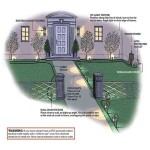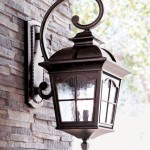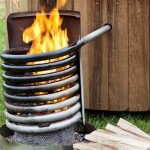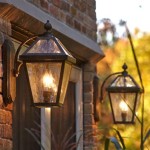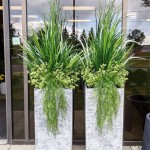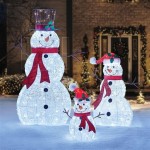Are Outdoor Furniture Waterproof? Understanding Water Resistance and Protection
The term "waterproof" is often used loosely, especially when discussing outdoor furniture. However, the reality is more nuanced. While some outdoor furniture materials offer excellent water resistance, true waterproofness is rare. Understanding the distinction between waterproof, water-resistant, and water-repellent is crucial for making informed decisions about protecting outdoor investments from the elements.
Prolonged exposure to rain, humidity, and snow can significantly damage outdoor furniture. Moisture can lead to rust, mold, mildew, warping, and fading, shortening the lifespan of even high-quality pieces. Consequently, choosing furniture with appropriate water resistance and employing protective measures are essential for maintaining its condition and appearance.
Key Point 1: Deciphering Water Resistance Terminology
The terms "waterproof," "water-resistant," and "water-repellent" represent varying degrees of protection against water penetration. Understanding these terms is the first step in selecting suitable outdoor furniture.
Waterproof implies that a material is completely impervious to water. Water will not penetrate the material under any circumstances. In the context of outdoor furniture, achieving true waterproofness is challenging due to the need for seams, joints, and potential wear and tear over time. Coatings and treatments applied to materials may initially provide a waterproof barrier, but this protection can degrade with exposure to sunlight, temperature fluctuations, and physical abrasion. Materials like certain types of closed-cell foams, particularly those used in cushions, come closest to achieving waterproof status but are rarely used as a complete construction material for the furniture frame itself.
Water-resistant indicates that a material can withstand water penetration to some degree, but not indefinitely. It offers a level of protection against light rain and splashes, allowing water to bead up and roll off the surface. However, prolonged exposure to water or submersion will eventually lead to water absorption. Many outdoor furniture materials are treated with water-resistant coatings or finishes to enhance their ability to repel moisture. For example, powder-coated aluminum frames and tightly woven synthetic fabrics are frequently employed for their water-resistant properties. The effectiveness of water resistance can vary significantly depending on the material, the quality of the treatment, and the duration of exposure.
Water-repellent is the lowest level of water protection. It signifies that a material sheds water easily, causing it to bead up and roll off. This protection is typically achieved through a surface treatment or finish. Water-repellent fabrics are commonly used for cushions and umbrellas, offering a short-term barrier against light rain. However, water-repellent treatments are generally less durable than water-resistant coatings and require periodic reapplication to maintain their effectiveness. The term often suggests a temporary effect, where the material will eventually become saturated if exposed to consistent moisture.
Key Point 2: Common Outdoor Furniture Materials and Their Water Resistance
The material composition of outdoor furniture plays a significant role in its water resistance. Different materials possess inherent properties that affect their ability to withstand moisture, requiring different levels of protective measures.
Wood: Wood, particularly hardwoods like teak, cedar, and redwood, is a popular choice for outdoor furniture due to its natural beauty and durability. These woods contain natural oils that provide a degree of water resistance and prevent rot and decay. However, even these durable woods are susceptible to water damage over time if not properly maintained. Unprotected wood can warp, crack, and develop mildew when exposed to moisture. Regular cleaning and the application of a sealant or oil can help to preserve the wood's water resistance and extend its lifespan. Softwoods, such as pine, are more susceptible to water damage and require more extensive treatment and protection.
Metal: Aluminum and stainless steel are common choices for outdoor furniture frames due to their resistance to rust and corrosion. Aluminum is lightweight and naturally resistant to rust, while stainless steel is incredibly durable and corrosion-resistant. However, metal furniture can still be susceptible to water damage in the form of oxidation or staining if not properly treated or maintained. Powder coating provides an additional layer of protection against moisture and scratches. Wrought iron, while aesthetically appealing, is prone to rust and requires regular painting or sealing to prevent corrosion. Any exposed metal areas, such as screws or joints, should be treated with a rust inhibitor.
Plastic: Plastic furniture, including resin wicker and molded plastic chairs, is generally highly water-resistant. Polyethylene and polypropylene are common plastic materials used in outdoor furniture. These materials are inherently resistant to water damage, making them a low-maintenance option for outdoor spaces. However, the quality of the plastic can vary, and lower-quality plastics may become brittle or fade over time with prolonged exposure to sunlight. While the plastic itself may be waterproof, water can still collect in crevices or seams, potentially leading to mold or mildew growth. Proper drainage and regular cleaning are essential for maintaining plastic furniture.
Fabric: Outdoor furniture cushions and umbrellas typically use fabrics designed to withstand the elements. Acrylic, polyester, and olefin fabrics are commonly used for their water resistance, UV resistance, and fade resistance. These fabrics are often treated with water-repellent finishes to enhance their ability to shed water. However, even water-resistant fabrics can become saturated with prolonged exposure to rain. It is essential to choose fabrics specifically designed for outdoor use and to regularly clean and dry cushions to prevent mold and mildew growth. Storing cushions indoors during periods of heavy rain or when not in use will further extend their lifespan.
Wicker: Natural wicker is woven from plant-based materials like rattan and bamboo, and is not inherently water-resistant. It absorbs moisture easily, leading to damage. Conversely, resin wicker, made from synthetic materials like polyethylene, offers superior water resistance and durability, making it a popular choice for outdoor use. While resin wicker is water-resistant, the frame underneath may still be susceptible to rust or corrosion if exposed to moisture. Inspecting and maintaining the frame is crucial for extending the lifespan of resin wicker furniture.
Key Point 3: Protecting Outdoor Furniture from Water Damage
Regardless of the materials used, taking proactive steps to protect outdoor furniture from water damage is crucial for preserving its condition and longevity. Several strategies can be employed to minimize water exposure and mitigate potential damage.
Covering: The most effective way to protect outdoor furniture from water damage is to cover it when not in use or during periods of inclement weather. Fitted covers made from water-resistant or waterproof materials provide a barrier against rain, snow, and sun. Ensure the covers are breathable to prevent moisture from becoming trapped underneath, which can lead to mold and mildew growth. Choosing covers that are specifically designed for the size and shape of the furniture will ensure a snug fit and maximum protection. Consider using furniture covers with vents to promote airflow and prevent condensation.
Storage: Storing outdoor furniture indoors during the off-season or periods of prolonged rain is an excellent way to prevent water damage. Garages, sheds, and basements provide a dry and sheltered environment for furniture storage. Before storing furniture, clean it thoroughly and allow it to dry completely to prevent mold and mildew growth. Cushions should be stored in airtight containers to protect them from moisture, dust, and pests. Properly preparing furniture for storage will help to ensure it remains in good condition until the next outdoor season.
Regular Cleaning: Regular cleaning is essential for preventing water damage and maintaining the appearance of outdoor furniture. Remove dirt, debris, and spills promptly to prevent them from staining or damaging the furniture's surface. Use a mild soap and water solution to clean furniture frames and cushions. Avoid using harsh chemicals or abrasive cleaners, which can damage finishes and fabrics. Regularly inspect furniture for signs of mold, mildew, or rust and address these issues promptly to prevent further damage. Let the furniture air dry completely after cleaning to prevent moisture buildup.
Waterproofing Treatments: Applying waterproofing treatments to outdoor furniture can enhance its water resistance and protect it from damage. Fabric sealants and wood preservatives are available to protect cushions and wooden furniture from moisture penetration. Reapply treatments periodically, following the manufacturer's instructions, to maintain their effectiveness. Choose waterproofing treatments that are specifically designed for the type of material being treated to ensure optimal protection and prevent damage. Consider using a UV-resistant treatment to protect furniture from fading in the sun.
Elevated Placement and Drainage: Raising furniture slightly off the ground can help to prevent water from pooling underneath and causing damage. Using furniture feet or platforms can provide adequate elevation and improve drainage. Ensure that outdoor spaces have proper drainage to prevent water from accumulating around furniture. Sloping surfaces and drainage systems can help to direct water away from furniture and prevent water damage. Positioning furniture away from areas prone to water accumulation, such as low-lying spots or areas near sprinklers, can further minimize water exposure.

Waterproof Outdoor Furniture With Modern And Sophisticated Designs

Is Patio Furniture Waterproof 4patio Com

Outdoor Waterproof Fabric The Best For Furniture Living Spaces

Waterproof Outdoor Furniture With Modern And Sophisticated Designs

Is Wicker Furniture Waterproof How To Protect

How To Waterproof Outdoor Furniture The Easy Way Maison De Pax

Outdoor Waterproof Fabric The Best For Furniture Living Spaces

Your Complete Guide To Waterproof Outdoor Cushions Fig Leaf

Is Rattan Furniture Waterproof Skyline Design

4 Tips For Protecting Your Outdoor Furniture In Florida
